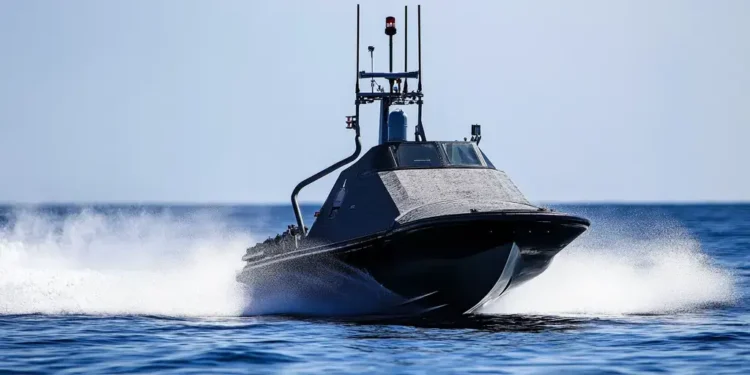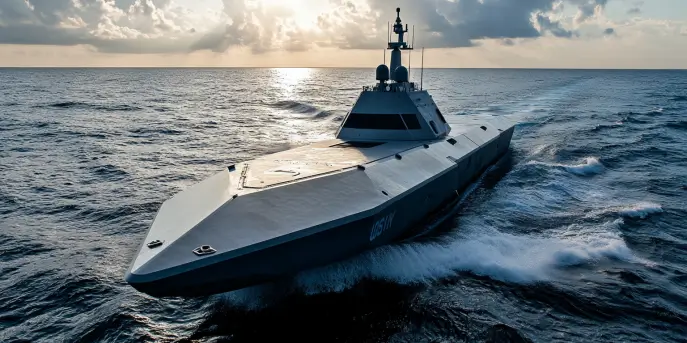The Advent of Anti-Piracy Technology
The high seas have long been plagued by piracy, a menace that has threatened trade routes, endangered lives, and posed significant economic risks. In response to this age-old problem, technological advancements have ushered in a new era of maritime security. Among these innovations is the advent of machines designed specifically to hunt down and deter pirates, ensuring safer and more secure oceans.
How Do These Machines Operate?
Modern anti-piracy machines utilize a combination of cutting-edge technologies to detect and prevent pirate activities. At the heart of these operations are advanced surveillance systems that incorporate radar, sonar, and satellite technology. These systems can identify suspicious vessels from miles away, using sophisticated algorithms to differentiate between normal maritime traffic and potential threats.
The machines are often equipped with high-resolution cameras and infrared imaging, allowing for day and night operation and providing real-time data to command centers on land or aboard vigilant ships. Once a suspect vessel is identified, these machines can deploy GPS trackers, enabling authorities to monitor their movements and respond accordingly.
Unmanned Aerial Vehicles (UAVs) in Anti-Piracy Operations
Unmanned Aerial Vehicles (UAVs), commonly known as drones, play a crucial role in modern anti-piracy strategies. Drones can be deployed from ships or coastal bases to conduct aerial reconnaissance over vast areas of ocean, quickly covering regions that would take far longer for traditional ships to patrol.
Equipped with high-speed communication arrays, drones relay live information back to command centers, enabling rapid response decisions. Their ability to fly at low altitudes grants them access to areas otherwise obscured to satellite imaging, while their quiet engines and small profiles make them difficult for pirates to detect.
Autonomous Surface Vessels (ASVs)
In addition to drones, Autonomous Surface Vessels (ASVs) are becoming increasingly vital in the battle against piracy. These unmanned ships navigate busy waterways independently, working autonomously or in coordination with manned vessels. They can patrol strategic chokepoints and report suspicious activities, serving as both deterrents and first responders.
ASVs are equipped with sensors and non-lethal deterrence systems. Upon identifying a threat, they can project warnings over loudspeakers or deploy water cannons to repel attackers, minimizing the need for direct human intervention.
Blockchain and Big Data
Technological advancements aren’t just limited to hardware. The use of blockchain technology and big data analytics is enhancing the anti-piracy toolkit. Blockchain provides a secure and transparent way to track vessels and shipment data, ensuring that all movements are recorded and cannot be tampered with. This transparency makes it increasingly difficult for illegal activities to go unnoticed.
Moreover, big data analytics allows for the processing of vast amounts of maritime information, identifying patterns and predicting potential piracy hotspots. By analyzing historical data, weather conditions, and shipping routes, authorities can anticipate and prevent attacks before they happen.
Cooperation and Challenges
Successful anti-piracy operations often hinge on international cooperation among governments, maritime organizations, and private companies. Establishing protocols for information sharing and joint responses is crucial to ensuring the effectiveness of these technologies.
However, the deployment of such sophisticated technology comes with its own set of challenges. Legal and regulatory hurdles, as well as the high cost of equipment and maintenance, can hinder the widespread adoption of these machines.
A Glimpse Into the Future
As technology continues to advance, the machines that hunt pirates stand to become even more sophisticated. Artificial intelligence and more powerful machine learning algorithms could revolutionize the way data is processed, making predictions quicker and more accurate. Future innovations may include more comprehensive autonomous fleets capable of real-time human-like decision-making.
While significant challenges remain, the potential benefits of these technologies are substantial, promising a future with safer seas and a decline in piracy-related incidents.
Specifications of a Typical Anti-Piracy Machine
| Feature | Details |
|---|---|
| Surveillance Range | Up to 200 nautical miles |
| Drone Endurance | 24 hours of continuous flight |
| Camera Resolution | Ultra HD 4k |
| Deterrent Systems | Water Cannons, Acoustic Devices |
| Data Transmission Speed | High-speed, real-time data relay |









